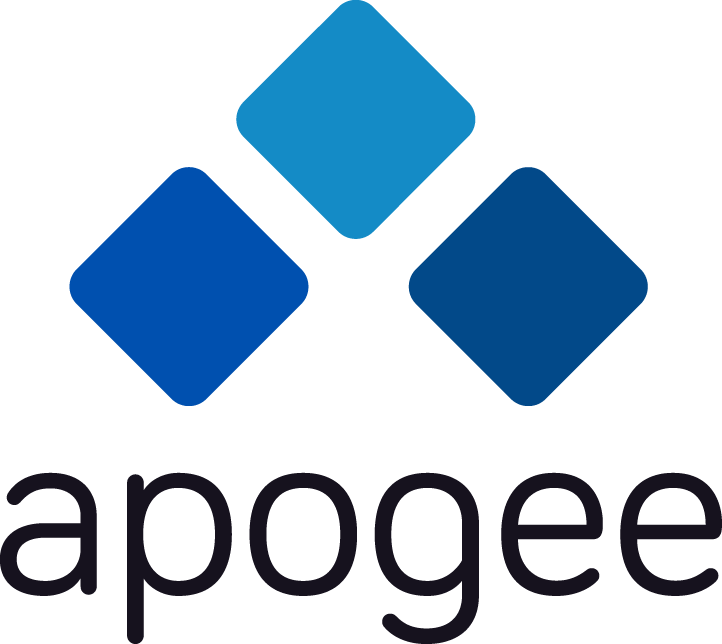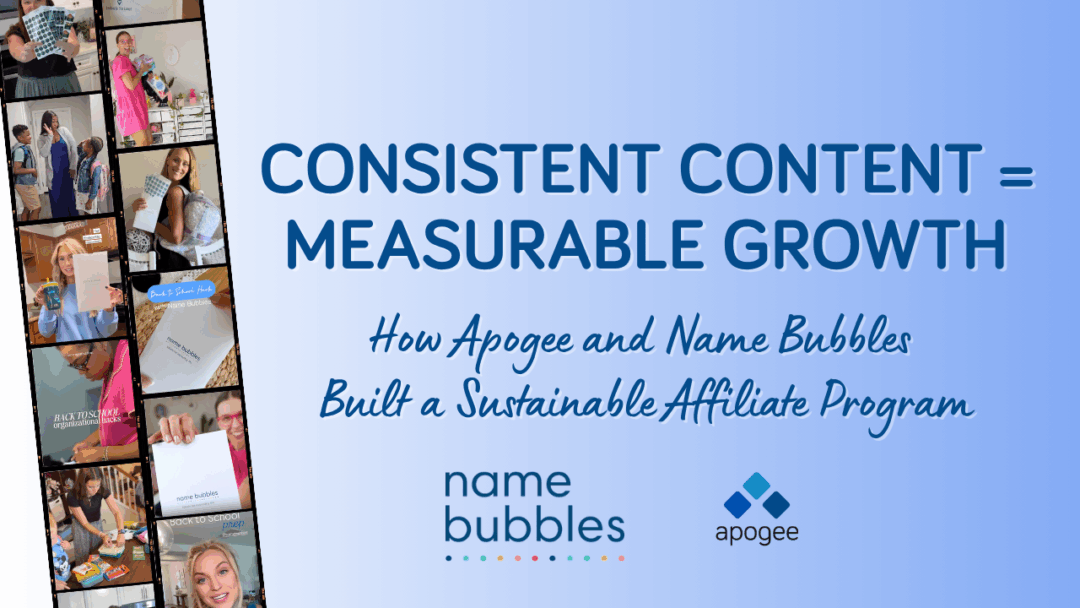Leapfrog Transactions with ShareASale
April 15, 2014Thank You, Affiliates
November 21, 2014We love our affiliates, big and small. I keep hearing stories of frustration from affiliates that have been removed or declined because of their size or lack of traffic. Some of these stories are from affiliates with double-digit sales. That's just crazy. Any manager that removes a hard working affiliate based on low volume is clearly out of touch with reality. Even if that affiliate is sending one sale a month or every other month, they have value. It's all about relevancy, not size. Read more here: Don't Overlook the Small Guy
The problem with big brand affiliate managers is that they are putting too much value on the big affiliates and they want their ratio of active affiliates to inactive affiliates to look stronger. When I hear about affiliates that are listed as “performers” or “platinum“, it's a red flag. What are they doing to take credit for so many sales? Toolbar? PPC trademark poaching? PPC coupon +? Crappy coupon landing pages? Just because the network pushes them, doesn't mean their promotions have value for your brand. It's like the scene in Men in Black where Will Smith’s Agent J is at the shooting range. All the other agents shoot the aliens but Agent J shoots little Tiffany because she was the only one that seemed dangerous at the time.
Instead of working with just the big players, managers should focus on recruiting more niche content affiliates and building a farm team of future all-star affiliates. Is it easy? No, not at all. But it's necessary. Let's take a look at a quick case study from an unnamed big brand client managed by Greg Hoffman Consulting.
This program was managed in-house. They did the best they could with limited resources. The marketing representative had never been to Affiliate Summit, never read online forums about best practices for affiliate marketing, never met any affiliates in person and only communicated with those that drove the bulk of the sales and asked for more money. With the start-up package, the network helped recruit all the affiliates that made the network money, not worrying about how they would affect the brand or other affiliates.
Instead of guessing at how to grow, the merchant chose to outsource. I have no problem giving away the secret formula. I'm happy if managers adopt my style. This industry needs to change the way brands look at affiliates. Respect and common sense has gone out of the window in many cases.
1. Remove toolbar affiliates. That's the easy way. You could also demand to be removed from the toolbar but this takes constant policing to stay out of the toolbar. They “accidentally” add merchants back in constantly. Finally, you can work with them through the only network that doesn't allow toolbars: ShareASale. In essence, the playing field is leveled and they become a cashback site or a coupon site with no competitive edge in technology. Removing the toolbars instills confidence and loyalty with the smaller affiliates.
If you rip off the band-aid now, you can start fresh. If you slowly remove toolbars over the next year, your growth will not begin as fast.
This process hurts. It's an outrageous demand. I want you to lose 30–50% of your affiliate channel revenue starting today. Your program will never meet its full potential until you make this fundamental change. Quit smoking. Give up caffeine. Stop drinking beer. Toolbars are a vice and they suck the life out of your affiliate program. I don't care if they call it a button, a browser help object or software. It's invasive and parasitic. When a customer gets a coupon delivered to them via a desktop application, it either takes away the commission from the original referring affiliate or it was an existing customer that was brought to you through another marketing channel. Therefore, hard working content affiliates see lower conversion rates and you overpay for that customer.
Can toolbars bring you new customers? Yes. But through all of my research with my clients, every single time I removed a toolbar affiliate, overall sales stayed constant and niche content affiliate conversions increased. Every time. No exceptions.
I like loyalty programs but not if they have a toolbar. Satisfy the customers’ need for cash back or points by working with affiliates that do not use technology for the easy sale.
2. How do you bring back that drop in sales and show increases quickly? Easy, it's called recruiting and it starts with your existing affiliates, you know the small ones.
In reviewing the case study merchant's Top 25 Affiliates lineup from March 2013, I count one content affiliate. The rest were toolbar, coupon, loyalty, typo squatters and shopping cart abandonment affiliates. In March 2014, there were eight content affiliates and the make-up of the rest is unrecognizable. Comparing sales dollars from March to March, sales increased by 33%. Remarkably, this is after we took a 49% drop from September 2012 to September 2013, the month after we removed toolbars.
The gap was created then filled and growth happened within that 7-month stretch. The majority of our work was to reach out to the existing database and utilize the knowledge and personal relationships we have with these affiliates. We motivated the content affiliates with best practices and gave them bumps in commission for effort. (Effort, not sales. There is a difference.) We then worked private deals with premier coupon sites and recruited from our internal lists of top affiliates.
Outbound recruiting also played a major role in the growth. The new content affiliates in the Top 25 rose from the ranks or they were targeted to join the program. After reviewing thousands of affiliates, we approved 400 relevant partners during that 7-month time period. Some were quick to get active while others will take time. Again, we didn't reject small affiliates—we rejected non-relevant affiliates.
In March 2013, we had 240 affiliates with clicks and 73 with sales. In March 2014, we had 235 affiliates with clicks and 51 with sales, but we had growth as stated above: sales increased by 33%. Quality beats quantity when you find the right partners to work with. The ratio got better after I removed around 50 toolbar/parasitic affiliates. If I had rejected affiliates based on their poor performance or low Alexa ranking, we would not have filled the gap and show growth.
3. The merchant pays affiliates a default commission of 4%. In August 2013, they were paying a toolbar affiliate an extra flat fee per month for homepage placement. Based on the sales from that affiliate, they were paying 25% in commission. (Madness. Paid placements are almost always a ripoff.) Overall, including some VIP commissions, they were paying 4.96% commission. In April 2014, that number dropped to a 2.8% commission payout. We adjusted the payouts to the coupon sites that helped close the sale but were not providing as many incremental sales as others.
That number will rise again as we are planning to incentivize more affiliates soon. Our new strategy is to reward affiliates based on effort, not volume. I know, it's an insane concept and one you might not understand yet.
Our “best” affiliates, from a revenue generation perspective, tend to be those larger websites that offer coupons to the open market. Because of the way those publishers operate, it is very, very difficult to “move them” and get them to treat the merchant any differently tomorrow than they treat us today – or to get them to treat us any differently than they treat any other merchant. Those sites will have our coupons in the system regardless of what commission we pay them. Because of these factors, we give these affiliates our lowest tier commission. Those affiliates that show great effort in creating reviews, unique content or offer promotions that go above and beyond simply supplying a coupon will receive our highest payouts.
4. What else have we done? We've run contests, we've paid for reviews and we've worked to optimize our data feed at the request of big and small affiliates alike. We've given affiliate-exclusive deals and vanity codes to top coupon partners.
The program is free from trademark poaching. We do not allow direct linking as the merchant has a robust internal PPC team. BrandVerity helps us monitor the terms daily. We partnered with several coupon affiliates to allow trademark and offers in paid search. We monitor the ads and the landing pages. They are under strict guidelines to correct any expired or non-affiliate-channel offers. Those that cooperate get exclusive promotions and higher commissions. Those that refuse are ignored, or worse: they are removed or declined from all of our programs.
Our newsletters have relevant information, best sellers, best practices, new deals, new banners and usually news that might help them get more engaged. No fluff. We write the newsletters to the affiliates, not the end customer.
5. We measure our success with simple metrics.
- Year-to-Year differences in orders, sales, clicks and commissions paid.
- The number of affiliates recruited and approved last month.
- The activity level of the recruited affiliates.
What have you learned so far about the program? 33% growth in sales. 77% drop in commissions paid. No toolbar affiliates active. 700% growth in active content affiliates within the Top 25, mostly from small affiliates that are being thrown away by the big brands.
Managers should pay attention to the affiliates that put forth effort and have a relevant plan for the program.

This article predates the transition to Apogee and may contain outdated references or links. We apologize for any inconvenience this may cause.




